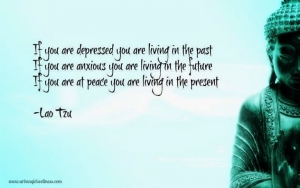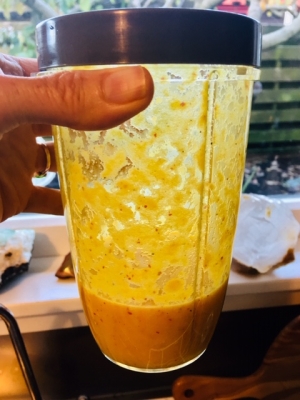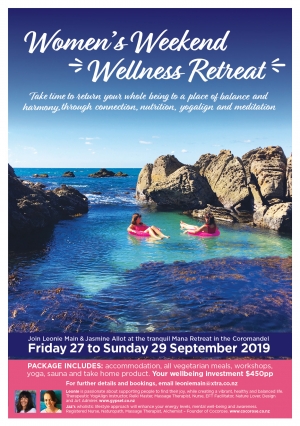An example of such diet restriction is a low FODMAP diet. FODMAP is an acronym for fermentable oligosaccharides, disaccharides, monosaccharides, and polyols, which are types of carbohydrates that may stay get stuck in your gut and ferment there.

What exactly are FODMAPS?
The mentioned saccharides (sugar chains) and polyols (sugar alcohols), if left undigested, end up in the lower portion of the large intestine. Here, there are broken down by bacteria.
Based on an Australian study published in the Journal of Gastroenterology and Hepatology last October 2009, this fermentation process sucks in water and lets out hydrogen, carbon dioxide, and methane gas which collectively expand and stretch the intestinal walls. This leads to bloating, abdominal or pelvic pain and distension as well as other related functional gastrointestinal symptoms.(1)

Here are examples of such carbohydrates considered under FODMAPS:
- Fructose (a monosaccharide): corn syrup, honey, fruit sugars, agave
- Lactose (a disaccharide): Dairy such as yoghurt, cheese, milk
- Fructans (oligosaccharides): Wheat, asparagus, onions, artichokes, garlic
- Galactans(oligosaccharides): Legumes like lentils, soybeans, and beans
- Polyols: fruits with seeds or pits such as avocados, cherries, apples, plums, peaches, and figs.
When you consume FODMAPs, they may pull water into your small intestine, leading to diarrhoea. In people with IBS, FODMAPs can travel to the gut or large intestine without being digested fully. Bacteria in the gut interact with these undigested food particles which cause bloating, gas, and pain.
Note, however, that not everyone is sensitive to the same type of FODMAPs. Therefore, it is crucial to identify the actual culprit.
What is the low FODMAP diet?
The low-FODMAP diet is a dietary plan that avoids or removes FODMAPs completely for up to four weeks. It is designed to relieve patients from digestion-related problems caused by FODMAP. It is assumed that if FODMAPs are the actual cause of your condition, you will feel better during or after this diet.

In this diet, you are still allowed to eat a lot of food choices. The only difference is limiting your carbohydrate intake to only the foods with low FODMAP content, hence the diet’s name.
Aside from those already mentioned, here are examples of foods that are high-FODMAP and are not to be consumed by someone under the diet.
- Anything made with whole grains like wheat, rye, or barley
- Artificial sweeteners like those in chewing gum and other candies
- Watermelon
- Cauliflower
- Dried fruits
- Mushrooms
- Cashews
- Ice cream
- Pistachios
On the other hand, here are low-FODMAP foods that are recommended for consumption:
- Kale, spinach, and other green leafy vegetables
- Almond
- Tomatoes
- Bananas
- Coconut
- Bell peppers
- Tangerines
- Blueberries
- Carrots
- Grapes
- Oats
- Cucumbers
- Potatoes
- Quinoa
- Rice
- Soy milk
Of course, there are other food choices that make it to the high-and low-FODMAP lists. So, it is still recommended to consult a dietitian and gastroenterologist to limit your FODMAP consumption without sacrificing a well-balanced, healthy diet that provides all your nutritional needs.
Who will benefit from a low-FODMAP diet?
Since it is designed to relieve symptoms related to digestion, it can benefit anyone who is suffering from such. However, it is now emerging as a treatment for other conditions such as:
- Specific autoimmune disorders like eczema, multiple sclerosis, or rheumatoid arthritis
- Other Functional Gastrointestinal Disorders (FGID)
- Fibromyalgia, recurrent migraines, and other conditions known to be triggered by eating specific foods
- Small intestinal bacterial overgrowth (SIBO)
A low-FODMAP diet has also been specifically proven to be a treatment for Irritable Bowel Syndrome or IBS.
A study published in the Gastroenterology and Hepatology Journal in 2012 suggested the low-FODMAP diet as a treatment for IBS(2).
About four years later, another study published in the Clinical and Experimental Gastroenterology Journal cited evidence on the efficacy of the low-FODMAP diet.(3) Reportedly, it caused relief for up to 86% of IBS patients that participated in the diet, with significant improvement in other gastrointestinal symptoms like bloating, abdominal pain, diarrhoea, constipation, distention, and gas.
Severe constipation can be debilitating and can lead to straining during bowel movement, haemorrhoids, and bowel prolapse. However, it is still recommended to be a short-term diet since the long-term effects are still unknown. Strict low-FODMAP dieting is also not advised due to the risk of inadequate nutrition and negative effects rooting from changes in the gut microbiota. FODMAPs are not actually all bad, many foods rich in FODMAPs encourage good bacterial growth in the gut.
In fact, about 3 out of 4 people with IBS were found to have eased symptoms right after starting a low-FODMAP diet while the most relief was experienced seven days or more into the plan, according to a study published in the journal Gastroenterology.
However, before starting a low-FODMAP diet, it is crucial first to confirm that you actually have IBS which can be improperly misdiagnosed or mistaken for bladder pain or uterus pain. These are entirely different conditions that require a different treatment approach.
How a low-FODMAP diet is followed
Following the diet does not simply involve getting rid of FODMAP-rich food, but is more complicated than what you could be expecting. It involves three different stages: restriction, reintroduction, and personalisation.

Stage 1: Elimination or Restriction
The first stage involves strictly avoiding high-FODMAP food for no longer than about 3 to 8 weeks only to maintain your gut health. Some people already notice symptoms to subside and improve during the first week, but many continue to finish all eight weeks.
Once you have found relief for your digestive symptoms, you can continue to the next stage. If your issues were not resolved, like what happens to about 30% of the people who try the diet, talk to your doctor about other non-diet treatments or alternatives.
Also, review and recheck your ingredients list and FODMAP information, and look at other factors that could be contributing to your IBS.
Stage 2: Reintroduction or Rechallenge Phase
The next stage involves reintroducing high-FODMAP foods through a system. Its purpose is to identify which FODMAPs are tolerable and establish your tolerance or threshold level because most people are only sensitive to a certain type.
In this step, you have to test specific FODMAP foods for three days each. Preferably, do this under the supervision of a dietitian. All throughout this stage, your low-FODMAP diet continues. Meaning, even if you can tolerate a FODMAP food, you still can’t eat it regularly until the next stage.
Stage 3: Personalization
Also called the modifies low-FODMAP diet, this still restricts your FODMAP intake. However, the types and number of servings will be adjusted to cater to your threshold as determined in the previous stage.
This is an important stage which will determine your diet flexibility and variety. These are associated with long-term improvement in your quality of life, overall well-being, gut health, and compliance.
Benefits of the Low FODMAP diet
More than 30 studies(4) have proven the low-FODMAP diet to provide the following benefits:
- Reduce digestive symptoms including bloat, reflux, bowel urgency, prolapsed bowel, constipation, diarrhoea, and stomach pain.
- Better quality of life
Numerous studies have provided evidence that a low-FODMAP diet can be beneficial for patients suffering from IBS and other gastrointestinal conditions. If you have any of these, give the low-FODMAP diet a try. It might be the answer to your digestive problems.


















